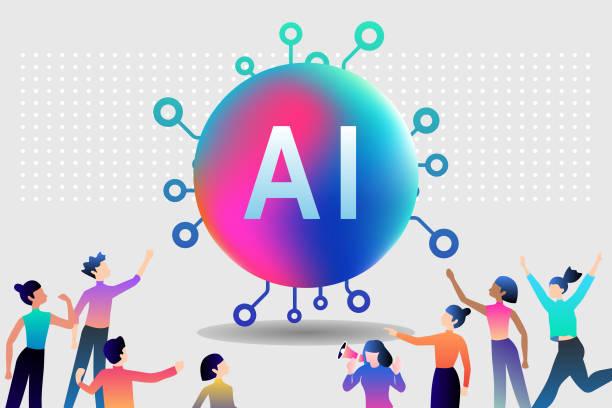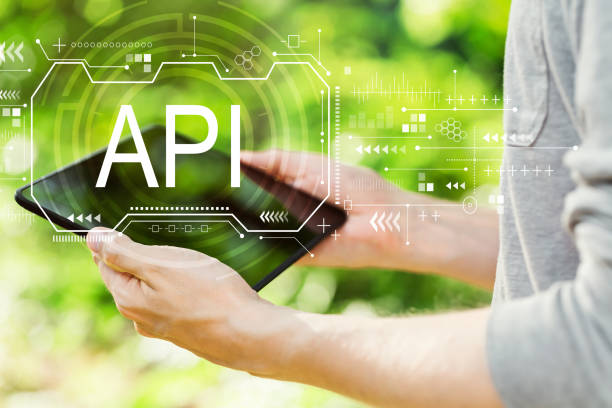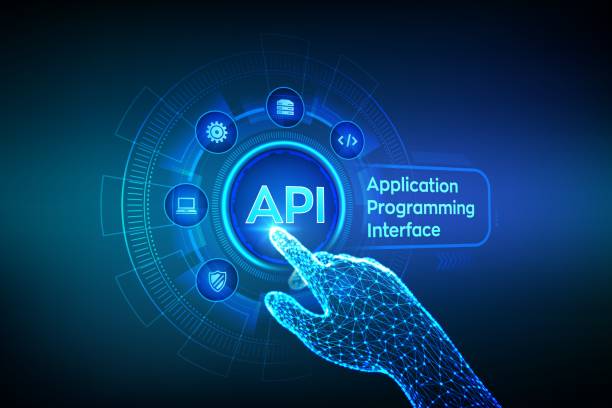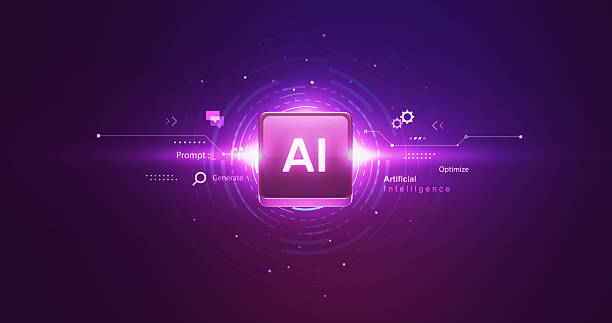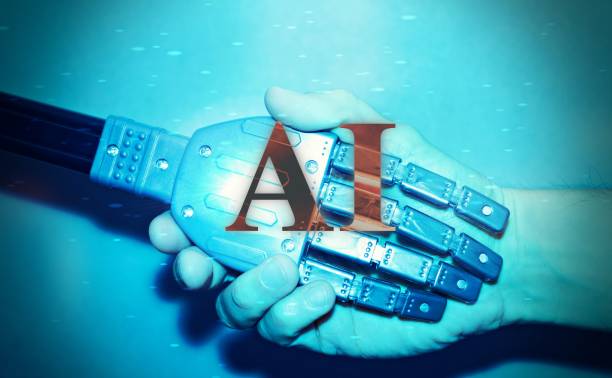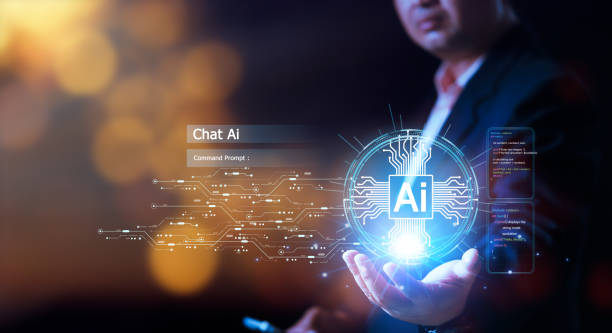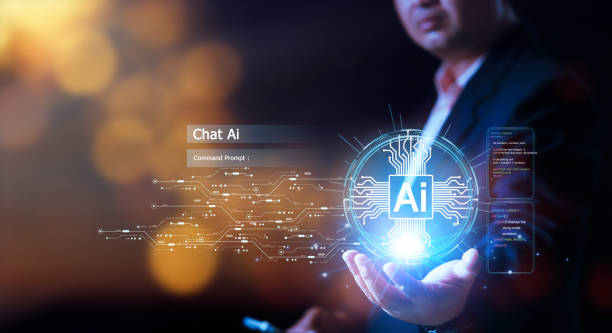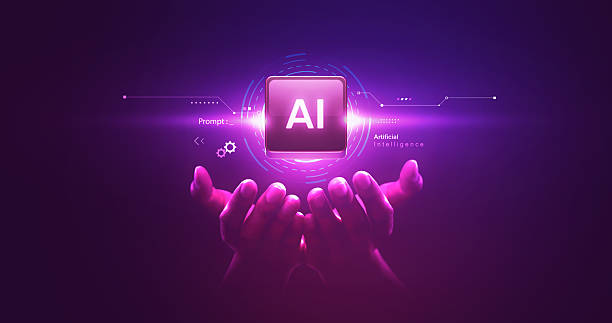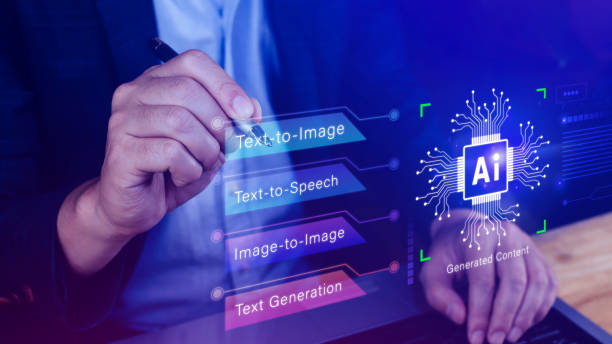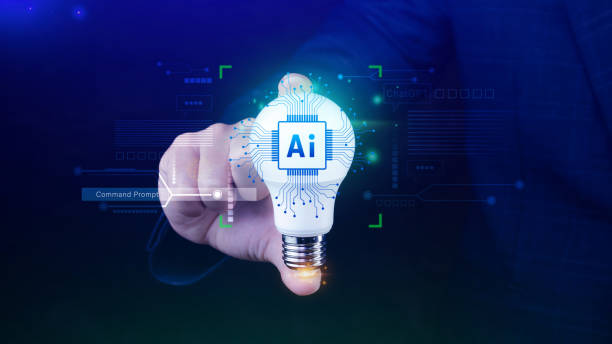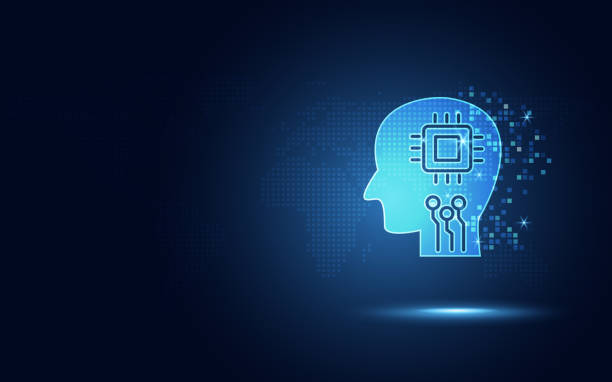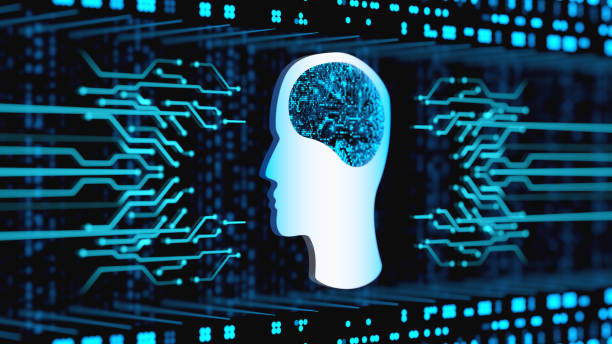What is an Artificial Intelligence Robot? Key Definitions and Concepts
What is an Artificial Intelligence Robot? Key Definitions and Concepts
An #AI_Robot (Artificial Intelligence Robot) generally refers to a physical or virtual agent that is equipped with artificial intelligence and is capable of performing tasks automatically using AI algorithms.
These tasks can include learning, problem-solving, decision-making, and interacting with the environment.
AI robots are used in a wide range of industries and applications, including manufacturing, customer service, healthcare, education, and even art.
These robots typically consist of a combination of hardware (such as sensors, motors, and actuators) and software (such as machine learning algorithms, natural language processing, and computer vision).
One of the important aspects of AI robots is their ability to learn and adapt to new conditions.
Using machine learning algorithms, these robots can learn from input data and improve their performance over time.
This allows them to operate effectively in dynamic and unpredictable environments.
For example, an AI robot used in a manufacturing plant can learn from production data, identify failure patterns, and prevent them from occurring.
By combining artificial intelligence and robotics, AI robots have the potential to create fundamental changes in various industries.
With the increasing advancements in artificial intelligence and robotics, it is expected that AI robots will play a more important role in our lives in the future.
For more information about artificial intelligence, you can visit the Wikipedia page on Artificial Intelligence.
Did you know that a poorly designed online store can drive away up to 70% of your potential customers? Rasaweb transforms your sales by designing professional and user-friendly online stores.
✅ Significant increase in sales and revenue
✅ Full optimization for search engines and mobile devices
⚡ [Get free consultation from Rasaweb]
Types of AI Robots Based on Application and Function
Click here to preview your posts with PRO themes ››
Types of AI Robots Based on Application and Function
AI robots can be divided into different categories based on their application and function.
One of these categories is industrial robots, which are used to perform repetitive and precise tasks in production lines.
These robots usually have robotic arms that can move and assemble parts with high precision.
Industrial robots can significantly increase production efficiency and quality.
Another category is service robots, which are designed to provide services to humans.
These robots can be used in hospitals to assist nurses, in restaurants to serve food, and in homes to perform daily tasks.
Service robots usually have interactive capabilities and can communicate with humans through voice or video.
AI service robots act like smart assistants and can help people with various tasks.
Search and rescue robots are also among the AI robots used in dangerous and inaccessible conditions for humans.
These robots can be used in natural disasters such as earthquakes and floods to find and rescue trapped people.
They usually have advanced sensors and thermal cameras that allow them to operate effectively in difficult conditions.
AI robots play a vital role in search and rescue.
Main Components of an AI Robot: Hardware and Software
Main Components of an AI Robot: Hardware and Software
An AI robot consists of two main parts: hardware and software.
Hardware includes the physical components of the robot, such as sensors, actuators, controllers, and power supply.
Sensors are responsible for collecting information from the environment, and actuators are used to perform physical actions such as moving, grasping, and releasing objects.
Controllers are the brain of the robot and are responsible for processing information and controlling the robot’s performance.
Software includes AI algorithms, operating systems, and applications.
AI algorithms allow the robot to learn, make decisions, and interact with the environment.
The operating system is responsible for managing hardware resources and running applications.
Applications are used to perform specific tasks such as facial recognition, natural language processing, and control of robotic arms.
AI robots will not be able to perform their tasks without these components.
Click here to preview your posts with PRO themes ››
Communication between hardware and software is established through hardware and software interfaces.
These interfaces allow the software to communicate with the hardware and control its performance.
For example, a machine learning algorithm can use sensor data to optimize the performance of actuators so that the robot can perform its task more effectively.
| Component | Description |
|---|---|
| Sensors | Collecting information from the environment (such as cameras, microphones, temperature and pressure sensors) |
| Actuators | Performing physical actions (such as motors, arms, wheels) |
| Controllers | Processing information and controlling the robot’s performance (such as microcontrollers, computers) |
| Power Supply | Providing the necessary power for the robot (such as batteries, adapters) |
AI Algorithms Used in Robots
AI Algorithms Used in Robots
AI robots use a wide range of AI algorithms to perform various tasks.
One of the most important of these algorithms is machine learning algorithms, which allow the robot to learn from data and improve its performance over time.
Machine learning algorithms can be divided into two main categories: supervised learning and unsupervised learning.
In supervised learning, the robot is trained using labeled data, while in unsupervised learning, the robot must discover patterns in unlabeled data.
Natural language processing algorithms are also very important for robots that need to interact with humans.
These algorithms allow the robot to understand and respond to human language.
Natural language processing algorithms can be used for tasks such as language translation, text summarization, and answering questions.
AI robots can communicate more effectively with humans using these algorithms.
Computer vision algorithms are also essential for robots that need to understand their visual environment.
These algorithms allow the robot to process images and videos and recognize objects, people, and scenes.
Computer vision algorithms can be used for tasks such as facial recognition, object detection, and motion tracking.
For more information in this field, you can visit the Computer Vision page.
Do visitors to your online store leave before making a purchase? Don’t worry anymore! With Rasaweb’s professional online store design services, solve the problem of not converting visitors into customers forever!
✅ Significant increase in conversion rate and sales
✅ Unique and attractive user experience
⚡ Contact us now for a free consultation!
Applications of AI Robots in Manufacturing and Service Industries
Applications of AI Robots in Manufacturing and Service Industries
AI robots are transforming the manufacturing and service industries.
In the manufacturing industry, robots are used to perform repetitive, dangerous, and precise tasks.
These robots can significantly increase production efficiency, quality, and safety.
For example, welding robots can perform precise and high-quality welds in less time than humans.
In the service industry, robots are used to provide services to customers, perform administrative tasks, and support employees.
These robots can significantly improve the speed, accuracy, and quality of services.
For example, chatbot robots can answer customer questions and solve their problems.
By providing 24-hour service, AI robots can increase customer satisfaction.
AI robots also have many applications in the healthcare industry.
These robots can be used to assist surgeons in performing surgeries, provide remote medical care, and help patients perform rehabilitation exercises.
AI robots can significantly increase the accuracy, safety, and effectiveness of healthcare.
Challenges and Limitations of Developing AI Robots
Challenges and Limitations of Developing AI Robots
The development of AI robots faces numerous challenges and limitations.
One of the most important of these challenges is the lack of sufficient and high-quality training data.
Machine learning algorithms require a large volume of training data to train and improve their performance.
Collecting and labeling this data can be very expensive and time-consuming.
AI robots need accurate and comprehensive data to learn effectively.
Another challenge is the complexity of AI algorithms.
Developing and optimizing AI algorithms requires high levels of knowledge and expertise.
These algorithms must be designed in such a way that they can adapt to different conditions and have reliable performance.
Also, these algorithms should be designed to be interpretable so that it can be understood how they arrive at their decisions.
Ethical issues are also among the important challenges in the development of AI robots.
The use of robots in some industries can lead to job losses.
Also, the use of robots in important decision-making can raise concerns about accountability and transparency.
AI robots must be designed and used in a way that benefits society and does not violate people’s rights.
The Future of AI Robots: Visions and Predictions
The Future of AI Robots: Visions and Predictions
The future of AI robots is very bright and full of potential.
With the increasing advancements in artificial intelligence and robotics, it is expected that robots will play a more important role in our lives in the future.
Robots can help humans perform difficult and dangerous tasks, increase productivity and quality of life, and help solve complex problems.
In the future, AI robots can become an integral part of our lives.
One of the important trends in the future of AI robots is the development of autonomous robots.
These robots can move and perform their tasks in different environments without the need for human intervention.
Autonomous robots can be used in transportation, agriculture, logistics, and other industries.
For example, self-driving cars can significantly increase transportation safety and efficiency.
| Trend | Description |
|---|---|
| Autonomous Robots | Robots that can move and perform their tasks in different environments without the need for human intervention. |
| Collaborative Robots (Cobots) | Robots that can work alongside humans and assist them in performing tasks. |
| Personal Robots | Robots that can help people with daily tasks and act as companions. |
| Medical Robots | Robots that can assist doctors and patients in surgery, remote medical care, and rehabilitation. |
Also, it is expected that collaborative robots (Cobots) will play a more important role in the future.
These robots can work alongside humans and assist them in performing tasks.
Collaborative robots can increase the safety and efficiency of the work environment and allow humans to focus on more complex and creative tasks.
Important Points in Choosing and Using an AI Robot
Important Points in Choosing and Using an AI Robot
Choosing and using an AI robot requires considering important points.
First of all, you need to accurately define your needs.
What tasks do you want to entrust to the robot? What expectations do you have from the robot’s performance? Answering these questions will help you choose the right robot.
Another point is to examine the capabilities and limitations of the robot.
Each robot has its own capabilities and limitations.
You need to make sure that the selected robot can effectively perform your desired tasks.
Also, you should pay attention to the limitations of the robot and not use it in conditions for which it is not suitable.
AI robots should be compatible with your needs and conditions.
Training and maintenance of the robot are also of great importance.
In order for the robot to function effectively, it must be properly trained.
Also, it should be maintained regularly to prevent problems.
Proper training and maintenance increases the lifespan of the robot and improves its performance.
For more information on this topic, you can visit the AI Ethics page.
Did you know that a poorly designed online store can drive away up to 70% of your potential customers? Rasaweb transforms your sales by designing professional and user-friendly online stores.
✅ Significant increase in sales and revenue
✅ Full optimization for search engines and mobile devices
⚡ [Get free consultation from Rasaweb]
Ethical and Legal Issues Related to AI Robots
Ethical and Legal Issues Related to AI Robots
The development and use of AI robots are associated with numerous ethical and legal issues.
One of the most important of these issues is accountability.
If a robot causes damage, who will be responsible? The robot manufacturer? The robot user? Or the robot itself? Determining responsibility in these cases can be very complex.
AI robots should be designed to prevent damage from occurring and, in the event of an accident, accountability should be clear.
Another issue is privacy.
Robots can collect a lot of information about their users.
This information can include personal information, habits, and preferences.
How can this information be protected and prevented from being misused? AI robots should be designed to respect users’ privacy and prevent unauthorized collection and use of information.
Issues related to discrimination are also among the important issues in this field.
AI algorithms can be unintentionally discriminatory.
If an algorithm is trained on discriminatory data, it may make discriminatory decisions.
How can discrimination be prevented in AI algorithms? AI robots should be designed to prevent discrimination and treat all people fairly.
Educational and Information Resources for Learning Robotics and Artificial Intelligence
Educational and Information Resources for Learning Robotics and Artificial Intelligence
Learning robotics and artificial intelligence requires access to appropriate educational and information resources.
Fortunately, many resources are available for learning these fields.
Numerous universities and educational institutions offer robotics and artificial intelligence courses.
These courses can help you acquire the knowledge and skills needed to enter these fields.
AI robots, as an interdisciplinary field, require knowledge in various fields.
Books and scientific articles are also valuable resources for learning robotics and artificial intelligence.
There are many books on the principles and fundamentals of robotics and artificial intelligence.
Also, scientific articles can familiarize you with the latest advancements and findings in these fields.
Studying books and scientific articles helps you deepen your knowledge in these fields.
Websites and blogs are also useful resources for learning robotics and artificial intelligence.
There are many websites that provide tutorials, articles, and news related to robotics and artificial intelligence.
Also, there are many blogs written by experts and enthusiasts in these fields.
Visiting websites and blogs helps you stay up-to-date with the latest developments in these fields and keep your knowledge current.
AI robots are rapidly developing, and staying up-to-date with the latest developments is very important.
Frequently Asked Questions
| Question | Answer |
|---|---|
| What is an artificial intelligence robot? | An artificial intelligence robot (AI Robot) is a machine capable of understanding its environment, reasoning, learning, and making decisions to perform tasks independently. |
| What is the difference between ordinary robots and AI robots? | Ordinary robots perform repetitive tasks based on pre-programming, while AI robots can learn from experience, interact dynamically with the environment, and even behave in a way that resembles human intelligence. |
| What are the main applications of AI robots? | They are used in industries (manufacturing, assembly), medicine (surgery, diagnosis), services (customer support, domestic), exploration (space, underwater), and many other fields. |
| What technologies are used in the construction of AI robots? | Machine Learning, Computer Vision, Natural Language Processing, Deep Learning, and Robotics are among the key technologies. |
| Can AI robots have emotions? | Currently, robots do not have emotions in the human sense. They can recognize and respond to emotions, but they do not experience emotions themselves. |
| What are the main challenges in the development of AI robots? | Safety, reliability, ethics, autonomy, adaptability to complex environments, and natural interaction with humans are important challenges. |
| How are AI robots trained? | They are usually trained using large volumes of data, machine learning algorithms, and deep learning to identify patterns and make decisions. |
| Examples of AI robots in everyday life? | Smart robotic vacuum cleaners, customer support chat robots, self-driving cars, and surgical robots in hospitals. |
| Are AI robots a threat to human jobs? | Some repetitive jobs may be automated, but at the same time, robots can increase productivity and create new jobs in the development, maintenance, and monitoring of these systems. |
| How is the future of AI robots predicted? | They are expected to become smarter, more autonomous, and capable of performing more complex tasks and to interact more closely with humans in different environments. |
And other services of Rasa Web Advertising Agency in the field of advertising
Smart Reportage: Professional optimization for customer behavior analysis using marketing automation.
Intelligent Content Strategy: An exclusive service for growing customer attraction based on optimizing key pages.
Smart Customer Journey Map: Transform sales by targeting the audience accurately.
Smart Conversion Rate Optimization: Designed for businesses looking to attract customers through intelligent data analysis.
Smart Conversion Rate Optimization: An exclusive service for online growth based on the use of real data.
And more than hundreds of other services in the field of internet advertising, advertising consulting, and organizational solutions
Internet Advertising | Advertising Strategy | Advertorial
Sources
Artificial Intelligence Robots
,Review of Artificial Intelligence Robots
,Types of Smart Robots
,Smart Robots
? To enhance your business’s position in the digital world and reach the peak of success, Rasaweb Digital Marketing Agency offers comprehensive and effective solutions. From responsive website design to search engine optimization, be seen professionally with us.
📍 Tehran, Mirdamad Street, next to the Central Bank, South Kazerun Alley, Ramin Alley, No. 6


